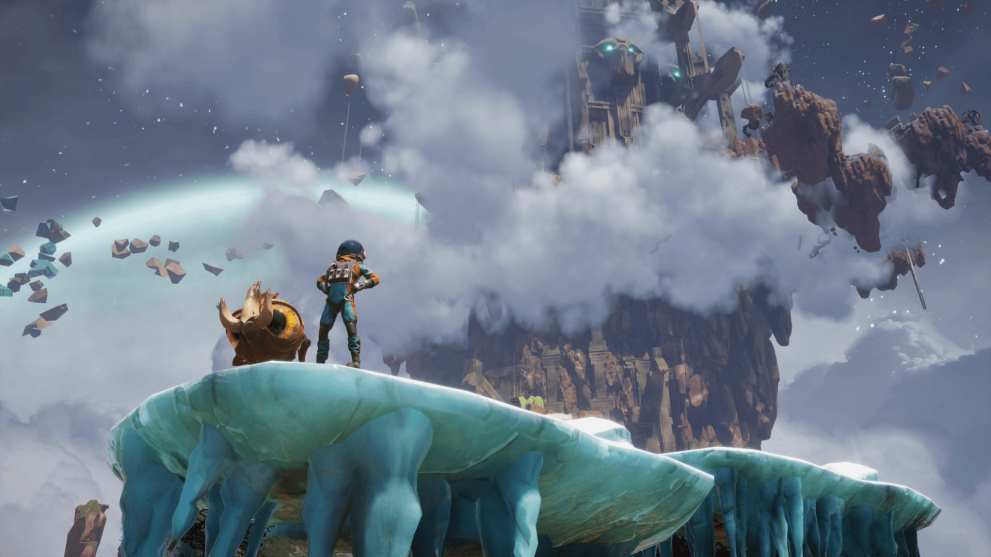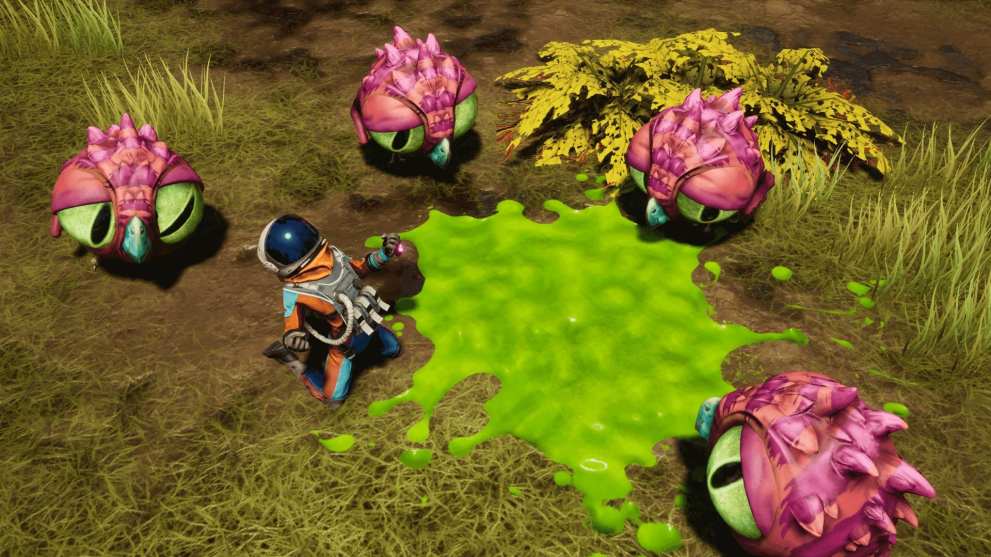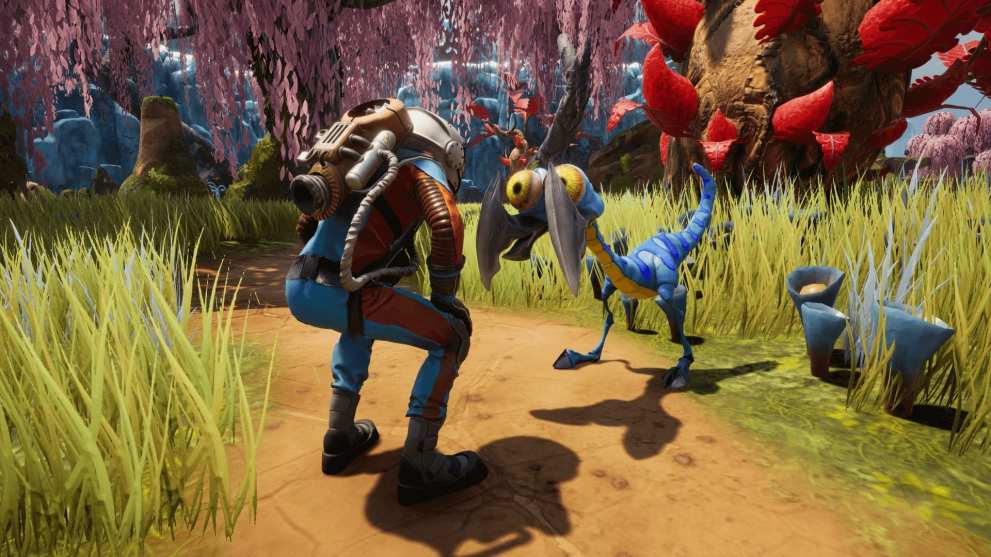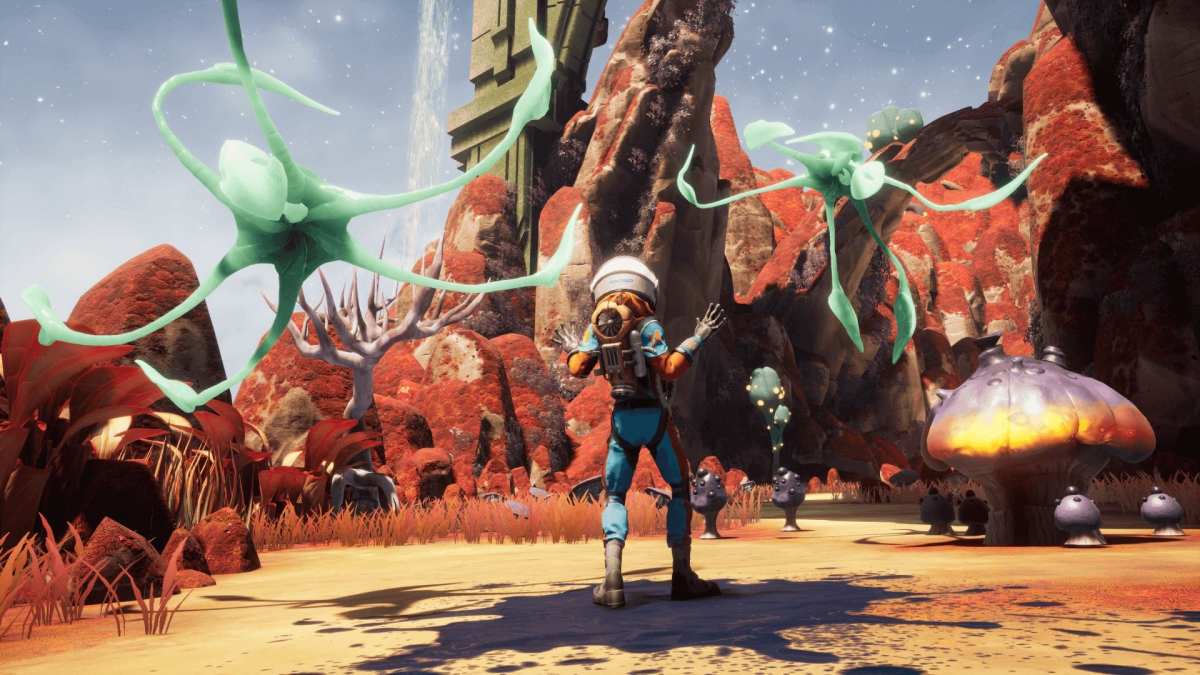Let’s get the most absurd notion out of the way and what you all most likely clicked the link for – farts. Within the first few hours of Journey to the Savage Planet, a strange alien artifact beckoned my attention. Scanning said object provided me with journal entries of an adventurer much like me. Detailing his journeys and discoveries across the planet, and the constant new surprises he found. He also detailed his last journey, and how he came across what he adeptly named “The Valley of Farts.”
In some ways, his journal entries very much mirrored my experiences with Journey to the Savage Planet as I ventured out and tried to find my own version of “The Valley of Farts.”
It’s worth mentioning that this article is going to explain some of the interesting ways the world works in Journey to the Savage Planet. I can’t implore you enough on how immersive the experience is for those who are not versed in the rules and lore of the world. Therefore, I recommend any first time players to return to this article after finishing the game.
Now that that’s out the way, let’s talk about how Journey to the Savage Planet is an excellent toy box that rewards constant experimentation and creativity.
The first steps I took on the planet were full of wonder, a sense of discovery and an insistent urge to play with everything the world had to offer. From the stunning fauna; to the strange, quirky creatures that roam the landscape, every corner of the planet was packed with new toys for me to play with.

How you discover this is down to you, and the amount of experimentation you wish to try within the world. It could be easy to beat the game in under a few hours, but the real charm of Journey to the Savage Planet lies in the plethora of side activities you can engage yourself in.
One of the first pieces of equipment you’ll grab your hands on is a scanner, which effectively pinpoints objects and wildlife for you to engage with and add to your codex. Though each entry provides a small tidbit of information for you to digest, it remains remarkably restraint in fully guiding you on how it all works.
An example of this is a Pufferbird, a cutesy, chubby animal that is very reminiscent of an Angry Bird. While the codex alerts you that they’re extremely friendly, it lacks the details to tell you that a swing of your backhand will reduce them to a pile of goo and carbon – which is used to further your research into upgrades.
Another interesting way you can source this from them, however, is the ability to feed them bait, which will end with a showering of carbon from their back-end, and of course — farts.
Due to their lovable exterior, I just wanted to hug every single Pufferbird I found, so I would always use bait to gather the resources I needed – until the most terrible thing happened. As I threw the bait, I missed the ground completely and covered the Pufferbird in the scrumptious brown liquid that they all love so much. Thinking nothing of it, I went to throw another, till the unthinkable happened. The rest of the Pufferbird clan attacked their friend, resulting in can what only be described as an explosion of goo and sadness.

It’s instances like this that go to show how inventive the world of Journey to the Savage Planet is, and how the developers have crafted the time to create a fully functioning ecosystem with its own rules and food chain.
The game taught me that destroying its inhabitants would reward me with further resources for upgrades. Coming upon a Baboushka — a multiple headed creature that innocently roams the plains — I tried this very technique and was met with new results. The Baboushka actually changed colour, split into two and ran away, screaming about my very existence. Journey to the Savage Planet isn’t afraid to change up its rules and surprise players in new ways with its systems.
It could be argued that Journey to the Savage Planet fulfills the promises that No Man’s Sky set out to achieve. I know, I know, this is a much smaller game in scale, but the world crafted here is very much made up of the promises made in No Man’s Sky. As a stranger in a whole new world, it’s unclear how many of the objects work, so a sense of discovery is required to decipher exactly how everything does.
The first few hours of Journey to the Savage Planet resulted in a lot of deaths due to me playfully poking with the mechanics of the game. I came across a strange thick goo that operated as spongey jump pads, and tomato type plans that would drop deadly vegetables, damaging my physique. It’s joyous to have an experience that doesn’t directly hand guide the player, but instead gives them free reigns with its world and encourages them to interact with it how they see fit.
Upon death, your materials remain at the corpse of your body. As you’re cloned back into existence, you’re prompted to go back and pick up your previous loot. Doing so is also another incentive to interact with whatever killed you, but in new ways to see how it reacts. Whether this be shooting, slapping or avoiding it is up to you, but everything reacts in a different way.

A plant known as a Porcupod is a fine example. The plant releases deadly spikes upon detection of your presence and can only be harmed shooting its interior, which is present after firing the spikes. Another method which I found though was that rushing the plant and slapping it would cause it to open its tough shell, allowing for a quick bullet strike to the heart to kill it for good. Nowhere in the game was this told to me, but instead my general sense of intrigue pushed me to discover this method.
It would be easy to discuss the many other systems Journey to the Savage Planet puts in place to reward your creativity. From the green Osmotic Cubes which can be fed materials until they grow in size and reward the player, to the Springy Seeds that create jump pads for players to reach higher ledges, there’s a constant sense of discovery in its world.
Though the last third of the adventure loses this sense of discovery as it streamlines the rest of the story, the first two-thirds of Journey to the Savage Planet are a consistently rewarding experience for the player’s sense of creativity within the world. Despite now finishing the game, I’m still determined to find my “Valley of Farts.”
I’m sure it’s out there.













Updated: Feb 12, 2020 03:01 pm